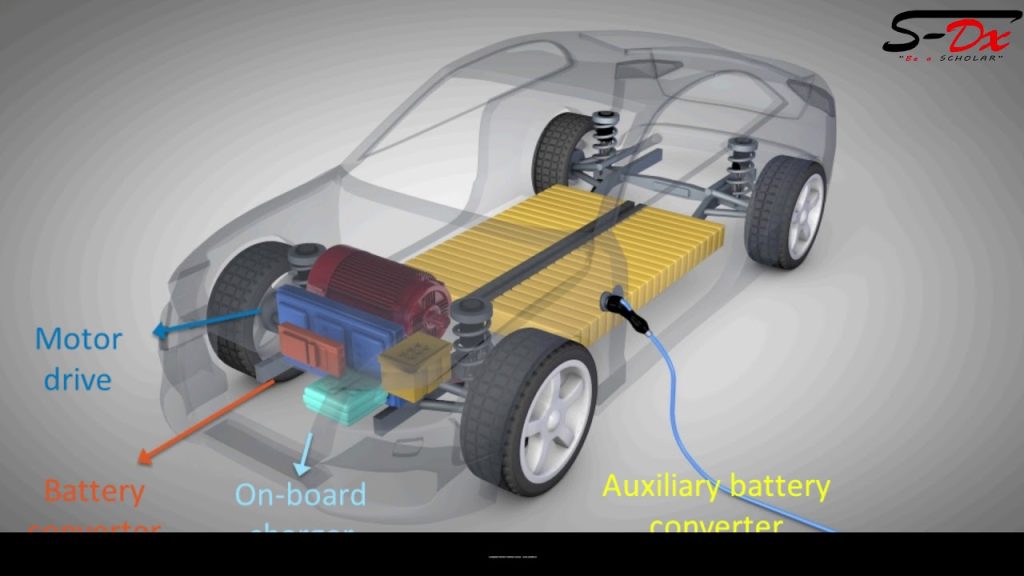

Electric car power electronics are the unsung heroes behind the smooth, powerful, and efficient operation of electric vehicles (EVs). This fascinating field encompasses the complex interplay of components and control systems that convert electrical energy into mechanical power, driving the motors that propel the car forward. Understanding these intricate systems is essential for optimizing performance, improving efficiency, and ensuring the safety of electric vehicles. This article will explore the core concepts and delve into the critical challenges facing designers, outlining solutions and future advancements in the field of electric car power electronics. We’ll examine everything from the fundamental principles to cutting-edge technologies.
Fundamental Principles of Electric Car Power Electronics
Understanding the Core Components
Electric car power electronics rely on a complex network of components to efficiently convert electrical energy to mechanical energy. At the heart of the system are power semiconductors, such as insulated gate bipolar transistors (IGBTs) and more modern alternatives like silicon carbide (SiC) MOSFETs. These components play a critical role in switching the high voltages and currents required for efficient power conversion. The switching speed and ability to handle high currents are crucial factors in determining the overall efficiency and performance of the power electronics system. Other crucial components include transformers, capacitors, and inductors, each performing specific functions in the conversion process. Transformers, for instance, step up or step down voltage levels as needed. The use of advanced control systems is essential for directing the flow of energy and optimizing efficiency. Each component must be carefully selected and designed to ensure reliability and efficiency. Understanding these fundamental components forms a critical foundation for comprehending the operation of the entire system.
Advanced Control Systems in Electric Vehicles
Optimizing Power Conversion and Efficiency
Advanced control systems play a crucial role in optimizing the power conversion process within electric cars. These systems meticulously monitor and adjust the flow of current and voltage to the motor, ensuring optimal performance and efficiency. Sophisticated algorithms regulate the operation of power semiconductors, maximizing power transfer and minimizing energy loss. Advanced control systems enable precise motor control, enabling acceleration, deceleration, and maintaining stable vehicle speed under various conditions. Real-time monitoring of various parameters, such as motor temperature and battery state-of-charge, is crucial for preventing overloads and ensuring consistent performance. A meticulously designed control system is essential for achieving high efficiency in electric vehicle power electronics.
Power Electronics Design Challenges and Solutions
Addressing High-Voltage and Power Density Issues
One of the primary challenges in electric car power electronics design lies in managing the high voltages and power densities inherent in these systems. The high voltage levels require specialized insulation and safety measures to prevent electrical faults and ensure operational safety. These systems often need to withstand extreme thermal stress. Thermal management becomes a paramount concern as these components generate significant heat during operation. Solutions such as advanced cooling systems and heat sinks are implemented to dissipate the heat and maintain optimal component temperatures.
Future Advancements in Electric Car Power Electronics
Embracing Innovations for Enhanced Performance
Future advancements in electric car power electronics are focused on enhancing efficiency, reducing size, and minimizing cost. The ongoing research and development in power semiconductors, such as silicon carbide (SiC) MOSFETs and gallium nitride (GaN) transistors, are promising advancements. These materials exhibit superior switching speed, lower switching losses, and the ability to operate at higher temperatures than traditional silicon components. The use of these materials is expected to improve the efficiency of electric vehicles, allowing for longer ranges and reduced charging times. The integration of advanced control systems with artificial intelligence (AI) algorithms will further enhance power conversion efficiency and optimize energy management strategies.
Real-World Applications and Case Studies
Examining Successful Implementations
Numerous car manufacturers have successfully implemented advanced power electronics systems in their electric vehicles. For instance, Tesla’s power electronics designs have achieved widespread acclaim for their efficiency and reliability, pushing the boundaries of what’s possible. Their use of advanced control algorithms has enabled them to improve battery life and driving range. Other manufacturers are striving to replicate and advance upon these designs to propel the development of the sector further. The development of these systems reflects ongoing innovation in the area, leading to a more efficient and sustainable future.
The Impact of Electric Car Power Electronics on the Environment
Exploring Environmental Benefits
Electric vehicles are gaining traction worldwide due to their reduced carbon footprint compared to traditional combustion engines. Electric car power electronics play a pivotal role in achieving higher efficiency and lower energy consumption, which directly contributes to lower emissions. The ongoing improvements in battery technology, control systems, and overall design are critical factors in mitigating the environmental impact of electric vehicles. The transition to electric vehicles is crucial for reducing our reliance on fossil fuels and mitigating climate change.
The Economic Considerations
Examining Cost-Effectiveness
While electric vehicles still have an upfront price premium, their long-term cost-effectiveness is becoming increasingly compelling. Improvements in battery technology, production scale, and components cost are driving prices down. The use of power electronics is a critical part of this, allowing for higher efficiency which translates to reduced energy consumption per mile traveled. The cost of electric car power electronics continues to decrease, which is a catalyst for further improvements and wider adoption.
Global Trends in EV Adoption
Understanding the Market Forces
Global trends in electric vehicle adoption are demonstrating a strong and increasing demand. Governments worldwide are increasingly incentivizing the transition to electric vehicles through subsidies, tax breaks, and charging infrastructure investments. This robust demand and support underpin the continuing evolution of electric car power electronics, accelerating the innovation cycle and generating significant market opportunities.
Ethical Implications
Addressing Environmental and Social Concerns
As the electric car power electronics sector expands, it is imperative to address the environmental and social implications of its growth. Concerns regarding the sourcing of raw materials for batteries, manufacturing practices, and end-of-life disposal must be considered to ensure ethical and responsible growth in the industry. Implementing sustainable practices throughout the manufacturing and lifecycle of electric vehicles and their components is vital to mitigating any potential negative impacts.
Frequently Asked Questions
What are the key challenges in electric car power electronics design?
One of the most significant challenges in the design of electric car power electronics is managing the high power density and high voltages involved. Safety is paramount, and designers must meticulously consider thermal management, insulation, and surge protection. Additionally, maintaining efficiency and minimizing energy loss throughout the various stages of power conversion are crucial to maximizing the electric vehicle’s range and performance. This necessitates the use of advanced materials and innovative circuit topologies. Meeting stringent regulatory standards and ensuring consistent performance across various operating conditions are also critical.
In conclusion, understanding electric car power electronics is crucial for optimizing performance, efficiency, and safety in electric vehicles. This deep dive has highlighted the intricate interplay of components, the importance of advanced control systems, and the ongoing innovations shaping the future of EVs. Further research into specific technologies, like silicon carbide transistors, and continued exploration of innovative battery management systems will propel the evolution of electric vehicle technology. Dive deeper into the world of electric car power electronics by exploring the resources provided in the bibliography! Let’s pave the way for an electrified future!